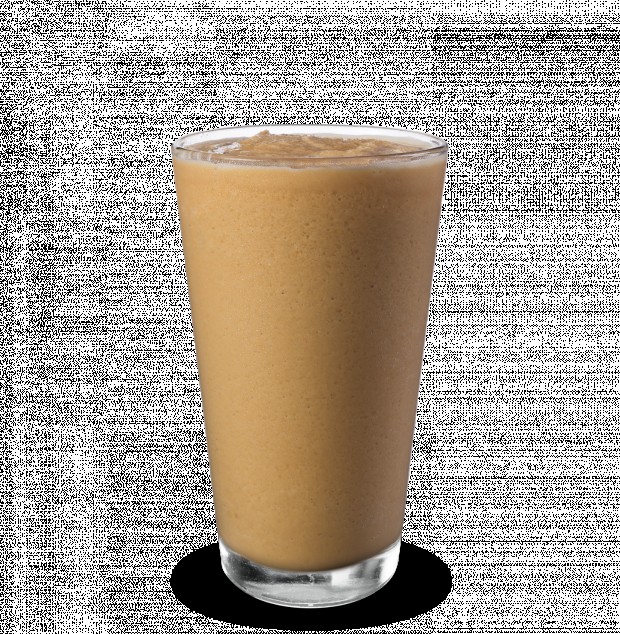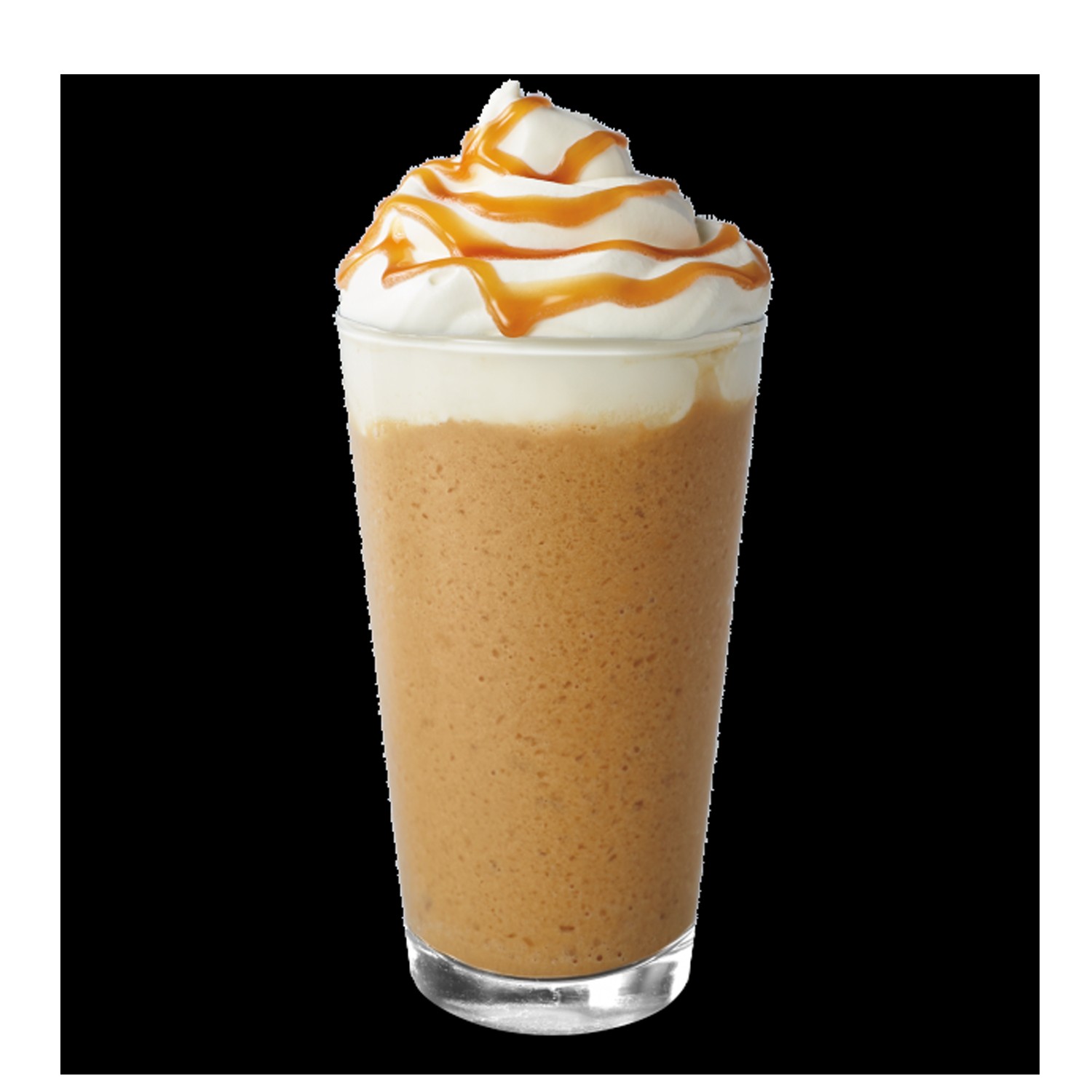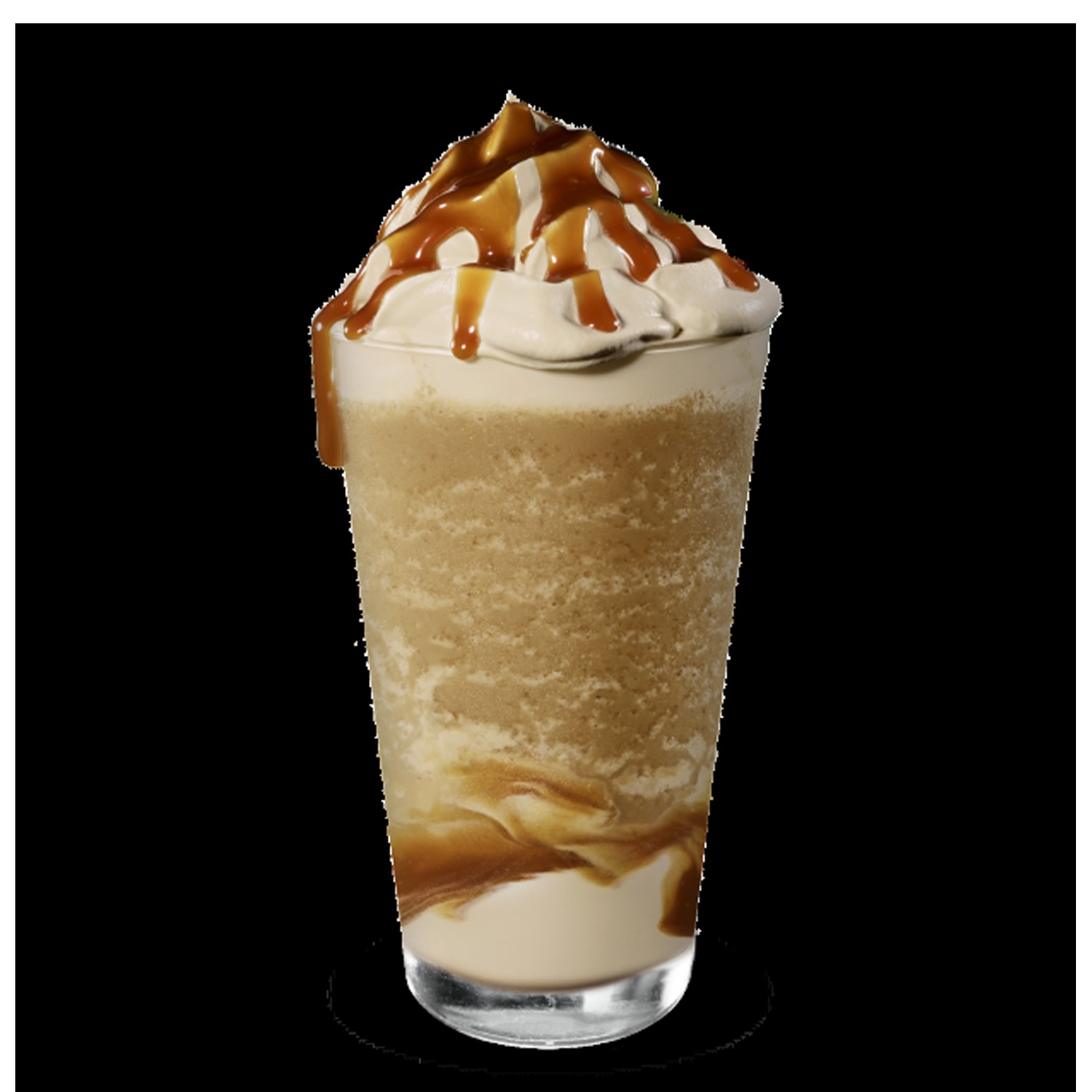Are you curious about How Much Coffee Is In A Frappuccino? This comprehensive guide from HOW.EDU.VN breaks down the caffeine content in various Frappuccino flavors, helping you make informed choices. Understanding caffeine levels allows you to enjoy your favorite blended beverage responsibly while being mindful of your daily intake. Get expert insights into this popular coffee drink.
1. Understanding Frappuccino Coffee Content
A Frappuccino is a blended coffee drink, but the amount of coffee—and therefore caffeine—can vary significantly. Let’s delve into the specifics to understand what contributes to these variations.
1.1. What is a Frappuccino?
A Frappuccino is a trademarked blended beverage sold by Starbucks. It typically consists of coffee or crème base, blended with ice and various ingredients such as flavored syrups and topped with whipped cream and sauces. It is known for its sweet flavor and milkshake-like consistency.
1.2. Key Ingredients Affecting Coffee Content
Several ingredients contribute to the coffee content of a Frappuccino:
- Frappuccino Roast Coffee: Starbucks uses a special blend of instant coffee called “Frappuccino Roast,” which is added to most coffee-based Frappuccinos.
- Espresso Shots: Some Frappuccinos include espresso shots for an extra caffeine boost.
- Coffee Base: The base syrup itself may contain some amount of coffee extract.
1.3. Why Knowing Caffeine Levels Matters
Being aware of the caffeine levels in your Frappuccino can help you:
- Manage Daily Intake: Avoid exceeding your daily caffeine limit.
- Control Energy Levels: Understand how it will affect your alertness and energy.
- Make Informed Choices: Opt for lower-caffeine options if you’re sensitive to stimulants or drinking it later in the day.
2. Caffeine Levels in Different Frappuccino Flavors
Let’s explore the caffeine amounts in some popular Frappuccino flavors. The values listed are approximate and can vary slightly based on preparation and customization.
2.1. Coffee Frappuccino
- Caffeine Content: A Grande Coffee Frappuccino contains approximately 70-75mg of caffeine.
- Main Coffee Source: Frappuccino Roast.
- Flavor Profile: This is the most basic coffee Frappuccino, delivering a straightforward coffee flavor.
2.2. Espresso Frappuccino
- Caffeine Content: A Grande Espresso Frappuccino contains around 165mg of caffeine.
- Main Coffee Source: Espresso shots.
- Flavor Profile: This option offers a stronger coffee taste due to the addition of espresso.
2.3. Caramel Frappuccino
- Caffeine Content: A Grande Caramel Frappuccino has about 70-75mg of caffeine.
- Main Coffee Source: Frappuccino Roast.
- Flavor Profile: Combines the standard coffee base with a sweet caramel flavor.
2.4. Mocha Frappuccino
- Caffeine Content: A Grande Mocha Frappuccino typically contains around 70-75mg of caffeine.
- Main Coffee Source: Frappuccino Roast.
- Flavor Profile: Blends the coffee base with chocolate notes for a mocha-flavored beverage.
2.5. Java Chip Frappuccino
- Caffeine Content: A Grande Java Chip Frappuccino has approximately 100mg of caffeine.
- Main Coffee Source: Frappuccino Roast and Java Chips (which contain coffee).
- Flavor Profile: Features chocolate chips and mocha flavors, adding a bit more caffeine than some other options.
2.6. Other Flavors and Variations
| Frappuccino Flavor | Caffeine Content (Grande) | Main Coffee Source | Flavor Profile |
|---|---|---|---|
| Vanilla Bean Crème | 0mg | None | Vanilla flavor without coffee |
| Strawberry Crème | 0mg | None | Strawberry flavor without coffee |
| Chocolate Crème | 0mg | None | Chocolate flavor without coffee |
| Matcha Green Tea Crème | Approximately 70-75mg | Matcha Powder (trace amounts) | Matcha flavor without coffee |



3. Factors Influencing Caffeine Levels
Several factors can influence the caffeine levels in your Frappuccino, making it essential to consider these when monitoring your intake.
3.1. Size Matters: Tall, Grande, Venti
- Tall: The smallest size has the least amount of caffeine.
- Grande: The medium size offers a moderate amount of caffeine.
- Venti: The largest size will contain the most caffeine.
3.2. Customizations: Adding Espresso Shots
Adding extra espresso shots significantly increases the caffeine content. Each shot typically adds about 75mg of caffeine.
3.3. Different Types of Milk
The type of milk used (whole, skim, almond, soy, etc.) does not affect caffeine levels, but it can alter the overall nutritional content and flavor profile.
3.4. Syrup and Topping Variations
Syrups and toppings generally do not contain caffeine unless they have coffee or chocolate elements.
4. Caffeine Comparison: Frappuccino vs. Other Coffee Drinks
Understanding how Frappuccino caffeine levels compare to other coffee beverages can help you make informed decisions about your caffeine consumption.
4.1. Frappuccino vs. Regular Coffee
A Grande Frappuccino typically contains less caffeine than a regular cup of brewed coffee. An average cup of coffee (12 oz) has around 120mg of caffeine, while a Grande Coffee Frappuccino has about 75mg.
4.2. Frappuccino vs. Latte
A Grande Latte usually contains one or two shots of espresso, resulting in approximately 75-150mg of caffeine, which is comparable to or slightly higher than a Frappuccino.
4.3. Frappuccino vs. Energy Drinks
Energy drinks generally have a higher caffeine content than Frappuccinos, often ranging from 80mg to over 200mg per serving.
4.4. Caffeine Content Chart
| Beverage | Caffeine Content (Grande/16 oz) |
|---|---|
| Coffee Frappuccino | 75mg |
| Espresso Frappuccino | 165mg |
| Brewed Coffee | 120mg |
| Latte | 75-150mg |
| Energy Drink | 80-200+mg |
5. Health Considerations
Consuming caffeine in moderation can have several health benefits, but excessive intake can lead to adverse effects.
5.1. Recommended Daily Caffeine Intake
The FDA recommends that adults consume no more than 400mg of caffeine per day. This guideline helps avoid negative side effects associated with overconsumption.
5.2. Potential Benefits of Caffeine
- Increased Alertness: Caffeine can enhance mental alertness and focus.
- Improved Physical Performance: It can improve physical endurance and performance.
- Mood Enhancement: Caffeine can stimulate the release of dopamine, leading to an improved mood.
5.3. Potential Side Effects of Excessive Caffeine
- Insomnia: Difficulty falling or staying asleep.
- Anxiety: Increased feelings of nervousness and anxiety.
- Digestive Issues: Caffeine can stimulate bowel movements and cause stomach upset.
- Increased Heart Rate: Elevated heart rate and blood pressure.
5.4. Who Should Limit Caffeine Intake?
Certain groups should be more cautious about their caffeine consumption:
- Pregnant Women: Should limit intake to 200mg per day.
- Children and Adolescents: Generally advised to avoid caffeine.
- Individuals with Anxiety or Heart Conditions: Should monitor their intake closely.
6. Tips for Enjoying Frappuccinos Responsibly
Here are some practical tips to help you enjoy Frappuccinos while keeping your caffeine consumption in check.
6.1. Opt for Smaller Sizes
Choosing a Tall instead of a Grande or Venti can significantly reduce your caffeine intake.
6.2. Ask for Less Coffee or No Coffee
You can request a Frappuccino with less Frappuccino Roast or even a crème-based version without any coffee.
6.3. Avoid Adding Extra Espresso Shots
Skipping the extra shot can keep the caffeine level moderate.
6.4. Choose Crème-Based Frappuccinos
Crème-based Frappuccinos do not contain coffee and are a caffeine-free alternative.
6.5. Space Out Your Consumption
Avoid consuming multiple caffeinated beverages in a short period to prevent overstimulation.
7. Expert Opinions on Caffeine Consumption
Experts emphasize the importance of understanding your own tolerance and being mindful of your overall caffeine intake.
7.1. Recommendations from Dietitians
Registered dietitians recommend tracking your caffeine consumption and being aware of hidden sources in foods and beverages.
7.2. Medical Insights on Caffeine and Health
Medical professionals advise individuals with underlying health conditions to consult with their healthcare provider about safe caffeine levels.
7.3. Studies on Caffeine Effects
Research indicates that moderate caffeine consumption can have cognitive benefits, but excessive intake can lead to adverse effects such as anxiety and sleep disturbances.
8. Making Informed Choices at Starbucks
Being informed about the options available at Starbucks can help you make healthier and more appropriate choices.
8.1. Checking the Starbucks Menu
The Starbucks menu provides nutritional information, including caffeine content, for all beverages.
8.2. Asking Baristas for Information
Starbucks baristas can provide specific details about ingredients and caffeine levels in different drinks.
8.3. Using the Starbucks App
The Starbucks app offers detailed nutritional information and customization options, allowing you to adjust your order to meet your needs.
8.4. Customizing Your Order
Don’t hesitate to customize your order to reduce caffeine or sugar content. Options include:
- Requesting fewer pumps of syrup.
- Choosing sugar-free syrups.
- Opting for non-dairy milk.
- Skipping the whipped cream.
9. Addressing Common Concerns and Myths
Let’s debunk some common myths and address frequent concerns about Frappuccinos and caffeine.
9.1. Myth: All Frappuccinos Are High in Caffeine
Fact: Crème-based Frappuccinos do not contain coffee and are caffeine-free. Coffee-based Frappuccinos have varying levels of caffeine, but many contain less than a regular cup of coffee.
9.2. Concern: Frappuccinos Are Unhealthy Due to Sugar Content
Fact: Frappuccinos can be high in sugar, but you can reduce the sugar content by customizing your order, such as requesting fewer pumps of syrup or choosing sugar-free options.
9.3. Myth: Caffeine Is Always Bad for You
Fact: Moderate caffeine consumption can have health benefits, such as increased alertness and improved cognitive function. However, excessive intake can lead to negative side effects.
9.4. Concern: Frappuccinos Are Addictive
Fact: Caffeine can be mildly habit-forming, but it is not considered highly addictive like certain drugs. Regular consumption can lead to tolerance, requiring more caffeine to achieve the same effects.
10. Conclusion: Enjoying Frappuccinos in Moderation
Understanding the caffeine content in Frappuccinos allows you to enjoy these blended beverages responsibly. By considering factors like size, customization, and your own caffeine sensitivity, you can make informed choices that align with your health and wellness goals.
10.1. Key Takeaways
- Caffeine levels in Frappuccinos vary by flavor and size.
- Crème-based Frappuccinos are caffeine-free.
- Customizing your order can help reduce caffeine and sugar content.
- Moderate caffeine consumption can have benefits, but excessive intake can lead to negative side effects.
10.2. Final Thoughts
Enjoying a Frappuccino can be a delightful treat when done mindfully. By staying informed and making smart choices, you can savor your favorite beverage without compromising your health.
10.3. Seeking Expert Advice
For personalized advice on caffeine consumption and its impact on your health, consider consulting with the experts at HOW.EDU.VN. Our team of experienced professionals can provide tailored guidance to help you achieve your wellness goals.
11. Understanding the Nuances of Caffeine in Coffee Blends
Delving deeper into the specific blends used in Frappuccinos can provide a more granular understanding of their caffeine content.
11.1. The Starbucks Frappuccino Roast Explained
The Frappuccino Roast is a unique blend of coffee specifically designed for cold, blended beverages. It is an instant coffee that provides a consistent base flavor without the bitterness that can sometimes occur when regular brewed coffee is cooled.
11.2. How Frappuccino Roast Differs From Espresso
Unlike espresso, which is brewed under pressure, the Frappuccino Roast is simply mixed with water. This difference in preparation results in a different caffeine extraction rate and flavor profile.
11.3. Decaf Options and Their Caffeine Content
For those sensitive to caffeine, Starbucks offers decaf versions of many Frappuccinos. While decaf coffee is not entirely caffeine-free, it contains significantly less caffeine—typically around 10mg per serving.
11.4. Customizing Caffeine Levels With Decaf Blends
You can customize your Frappuccino by requesting a mix of regular and decaf Frappuccino Roast to tailor the caffeine level to your preference.
12. The Role of Add-Ins: Syrups, Sauces, and Powders
Beyond the coffee itself, various add-ins can influence the overall experience of enjoying a Frappuccino, even if they don’t directly affect caffeine levels.
12.1. Impact of Syrups on Flavor and Health
Syrups like vanilla, caramel, and hazelnut add sweetness and flavor but also contribute to the sugar content. Opting for sugar-free syrups can reduce the caloric impact.
12.2. Sauces: Mocha, Caramel Drizzle, and More
Sauces such as mocha and caramel drizzle enhance the flavor and visual appeal of Frappuccinos. While they don’t contain significant caffeine, they do add to the sugar and fat content.
12.3. Powders: Matcha, Chocolate Malt, and Other Enhancers
Powders like matcha can add subtle amounts of caffeine, while others such as chocolate malt provide flavor without caffeine.
12.4. Balancing Add-Ins for a Healthier Frappuccino
To create a healthier Frappuccino, consider reducing the amount of syrups and sauces and opting for natural flavor enhancers like cinnamon or nutmeg.
13. Comparing Frappuccinos Around the World
Caffeine content and ingredients can vary slightly in different countries due to regional preferences and regulations.
13.1. Regional Variations in Starbucks Menus
Starbucks menus vary by region, with some countries offering unique Frappuccino flavors and ingredient combinations.
13.2. Differences in Coffee Blends and Preparation Methods
The coffee blends and preparation methods used in Frappuccinos can differ slightly based on local practices, influencing the final caffeine content.
13.3. Impact of Local Regulations on Ingredients
Local regulations regarding food additives and nutritional labeling can impact the ingredients used in Frappuccinos, affecting their overall composition.
13.4. Tips for Travelers: Finding Caffeine Information Abroad
When traveling, check the local Starbucks website or app for nutritional information, including caffeine content, to make informed choices.
14. Exploring Non-Coffee Frappuccino Alternatives
For those who love the Frappuccino experience but want to avoid caffeine altogether, there are numerous crème-based alternatives to explore.
14.1. Overview of Crème-Based Frappuccinos
Crème-based Frappuccinos do not contain coffee and are made with a sweet base blended with ice and various flavors.
14.2. Popular Crème Frappuccino Flavors: Vanilla Bean, Strawberry
Popular flavors include Vanilla Bean Crème and Strawberry Crème, which offer a sweet and refreshing taste without any caffeine.
14.3. Customizing Crème Frappuccinos With Unique Flavors
You can customize crème Frappuccinos by adding syrups, sauces, and toppings to create your unique caffeine-free beverage.
14.4. Health Benefits of Choosing Non-Coffee Options
Choosing crème-based Frappuccinos can help you reduce your caffeine intake and avoid potential side effects associated with stimulants.
15. Understanding Your Personal Caffeine Sensitivity
Recognizing your personal caffeine sensitivity is crucial for managing your consumption effectively.
15.1. Factors Influencing Caffeine Sensitivity: Genetics, Weight
Factors such as genetics, body weight, and overall health can influence how your body responds to caffeine.
15.2. Identifying Symptoms of Caffeine Overload
Symptoms of caffeine overload can include anxiety, insomnia, digestive issues, and increased heart rate.
15.3. Strategies for Managing Caffeine Sensitivity
Strategies for managing caffeine sensitivity include limiting your intake, spacing out your consumption, and avoiding caffeine later in the day.
15.4. Consulting Experts for Personalized Advice
If you have concerns about your caffeine sensitivity, consult with the experts at HOW.EDU.VN for personalized advice and guidance.
16. The Future of Frappuccinos: Trends and Innovations
The Frappuccino continues to evolve with new flavors, ingredients, and preparation methods, reflecting changing consumer preferences and health trends.
16.1. Emerging Flavors and Ingredient Combinations
Starbucks is constantly innovating with new Frappuccino flavors and ingredient combinations, such as plant-based options and low-sugar alternatives.
16.2. Healthier Frappuccino Options: Low-Sugar, Plant-Based
The company is also focusing on developing healthier Frappuccino options, including low-sugar and plant-based versions.
16.3. Sustainable Sourcing and Ethical Considerations
Starbucks is committed to sustainable sourcing and ethical practices, ensuring that its coffee and ingredients are produced responsibly.
16.4. How Technology Is Shaping the Frappuccino Experience
Technology is enhancing the Frappuccino experience through mobile ordering, customization options, and nutritional information available on the Starbucks app.
17. Frequently Asked Questions (FAQ) About Frappuccino Caffeine
Here are some frequently asked questions to address common queries about Frappuccino caffeine content and consumption.
17.1. How much caffeine is in a Grande Coffee Frappuccino?
A Grande Coffee Frappuccino contains approximately 70-75mg of caffeine.
17.2. Do all Frappuccinos have caffeine?
No, crème-based Frappuccinos do not contain caffeine.
17.3. Can I order a Frappuccino with less caffeine?
Yes, you can request less Frappuccino Roast or a mix of regular and decaf.
17.4. How does adding espresso shots affect the caffeine level?
Adding an espresso shot typically adds about 75mg of caffeine.
17.5. What is the recommended daily caffeine intake?
The FDA recommends no more than 400mg of caffeine per day for adults.
17.6. Are Frappuccinos safe for pregnant women?
Pregnant women should limit their caffeine intake to 200mg per day.
17.7. What are the symptoms of caffeine overload?
Symptoms include anxiety, insomnia, digestive issues, and increased heart rate.
17.8. How can I reduce the sugar content in a Frappuccino?
Request fewer pumps of syrup or choose sugar-free options.
17.9. Are there caffeine-free Frappuccino options available?
Yes, crème-based Frappuccinos are caffeine-free.
17.10. Where can I find more information about caffeine and its effects?
Consult with the experts at HOW.EDU.VN for personalized advice and guidance.
Navigating the world of Frappuccinos and caffeine can be complex, but with the right information, you can make informed choices that align with your health and wellness goals. Whether you’re looking to reduce your caffeine intake or simply understand the nuances of your favorite blended beverage, HOW.EDU.VN is here to provide the expert guidance you need.
Are you seeking personalized advice on managing your caffeine consumption? Do you have specific health concerns related to your diet? At HOW.EDU.VN, we connect you directly with leading PhDs and experts who can offer tailored solutions to your unique challenges.
Don’t navigate these complexities alone. Contact us today to schedule a consultation and gain clarity and confidence in your health and wellness decisions. Our team of over 100 renowned PhDs is ready to provide the insights you need to live your healthiest life.
Contact Information:
- Address: 456 Expertise Plaza, Consult City, CA 90210, United States
- WhatsApp: +1 (310) 555-1212
- Website: HOW.EDU.VN
Take the first step towards a healthier you. Reach out to how.edu.vn now and discover the difference expert guidance can make.